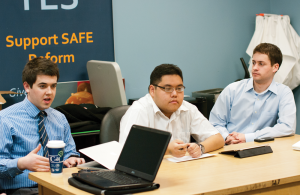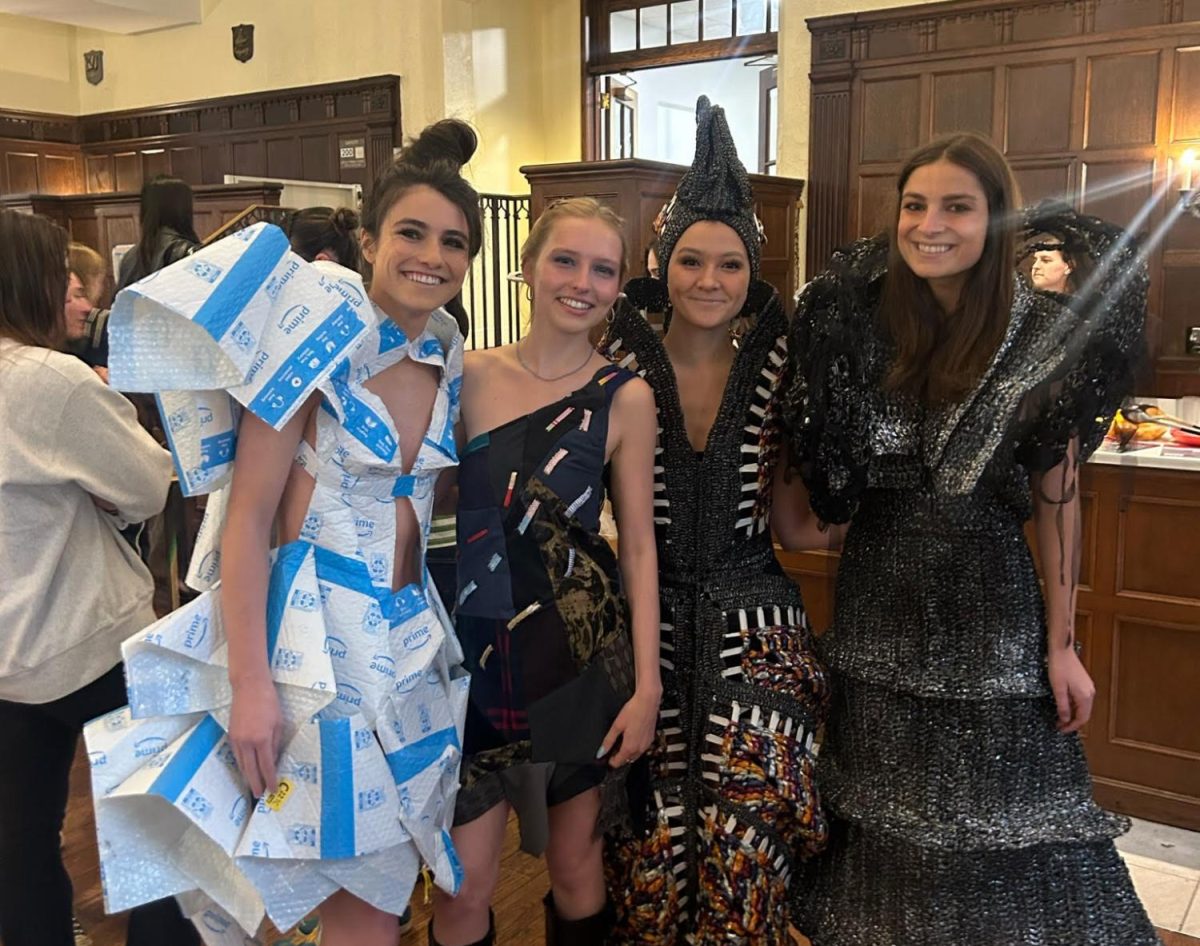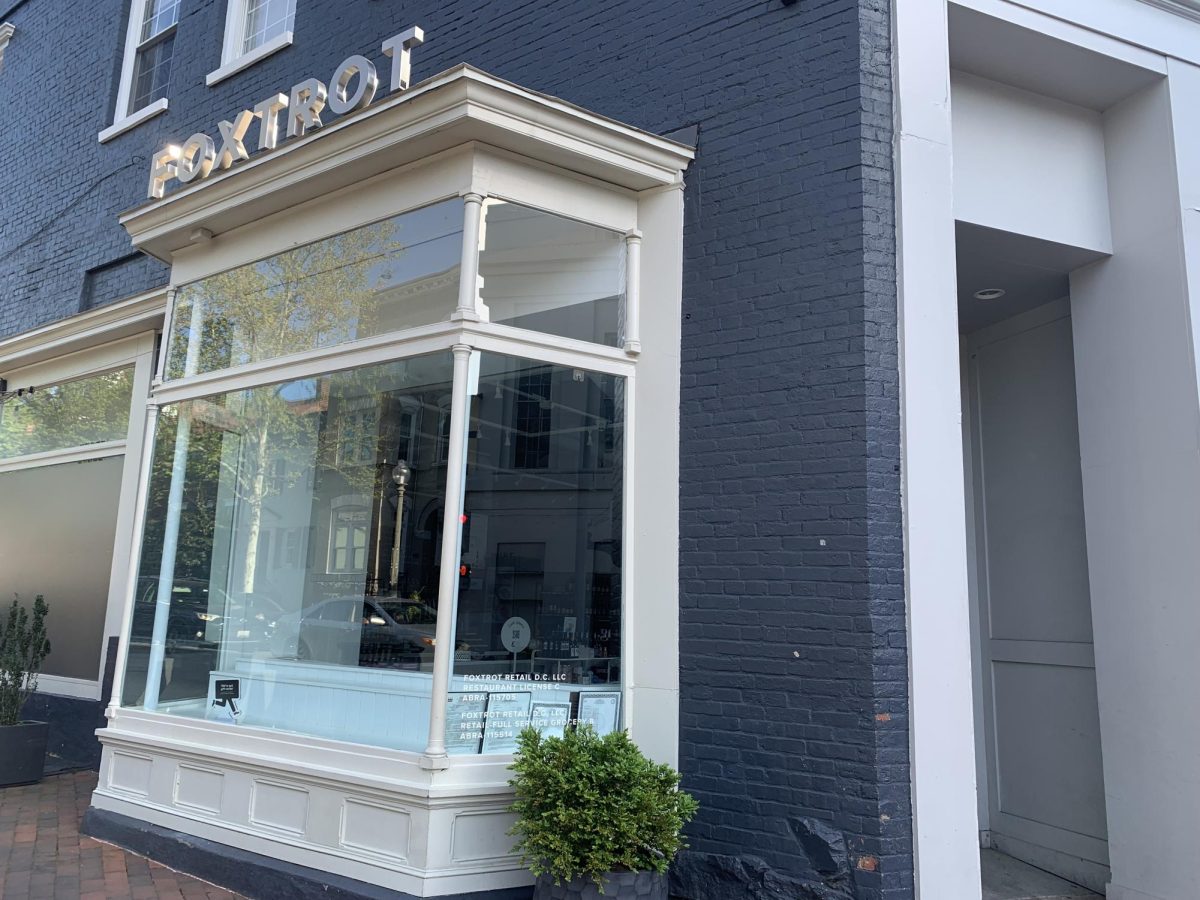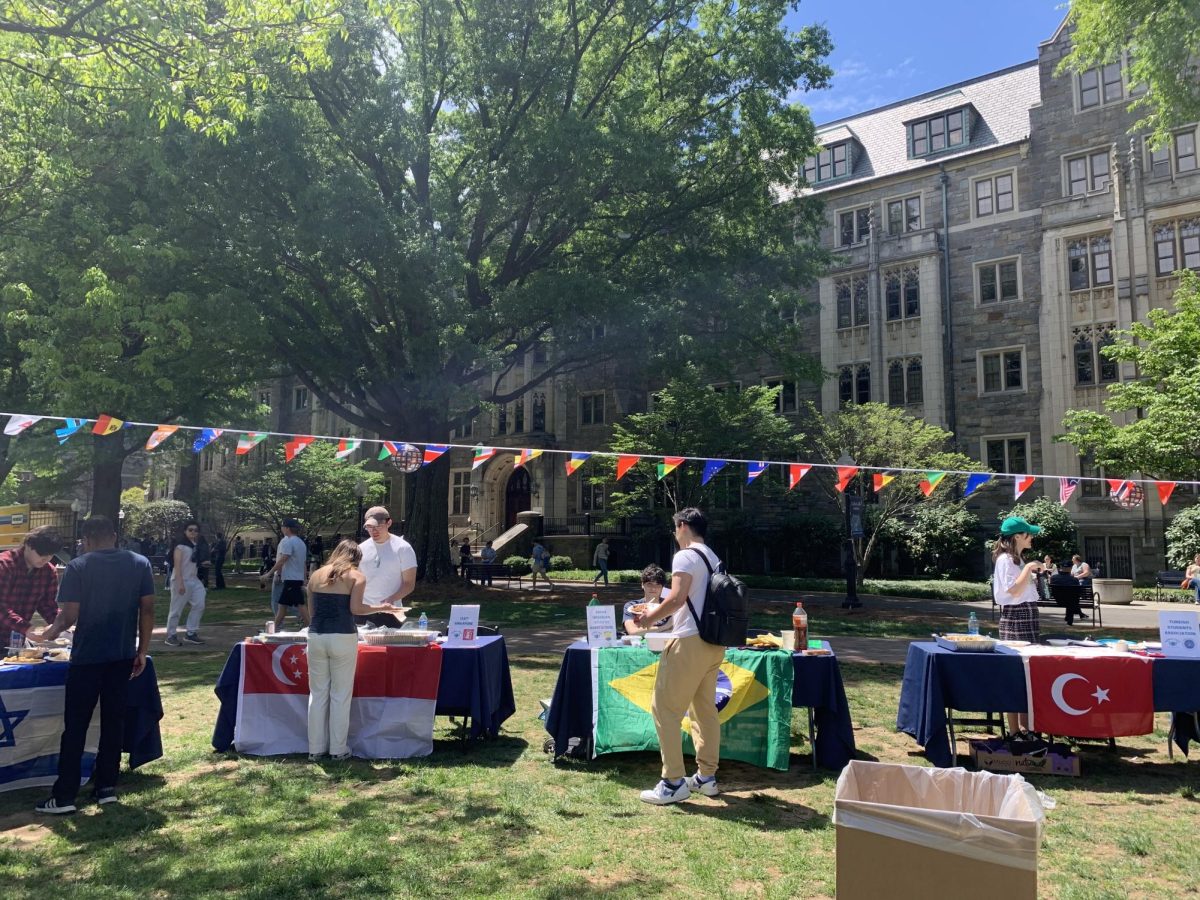
GUSA President Mike Meaney (SFS ’12), far left, discussed the recommendations of the report Sunday.
The Student Life Report Committee presented recommendations for improving campus engagement at a press conference Sunday.
“Over the last five months we’ve sought out what we like to think of as the limitless upside of student happiness on campus,” Report Committee Chair Shuo Yan Tan (SFS ’12) said.
According to the report’s Editor-in-Chief Matt Hoyt (COL ’12), the Student Life Report investigates aspects of student organization advisory boards as well as intellectual and student life from a qualitative and quantitative perspective.
The document, which is still in draft form, is slated to be finished and released within the next two weeks. It is the first comprehensive report about student life completed since 1999.
According to Georgetown University Student Association Vice President Greg Laverriere (COL ’12), the report is intended to help provide a better framework for how student money is allocated. It offers suggestions for improving five student advisory boards, including the Student Activities Commission, the Center for Social Justice, the Advisory Board for Club Sports, the Media Board, the Performing Arts Advisory Council and the Georgetown Program Board, as well as various recommendations for institutional and intellectual improvement.
Many of these recommendations call for expansion of student space, improved transparency among the funding boards and better centralization of information.
The report also includes more specific recommendations, such as combining What’s After Dark andGPB into one group and moving the Lecture Fund under the purview of GPB.
The committee also analyzed data from questionnaires including the Senior Survey, Enrolled Student Survey and Civic Engagement Survey. Based on this analysis, the committee suggested that there is a positive relationship between engagement in Georgetown-related activities and student satisfaction. The called for an investigation into students who do little to engage in activities on campus through surveys, focus groups or other initiatives.
The 1999 Student Life Report, which primarily addressed student space, funding and bureaucracy, has been used as the outlining document for initiatives to address relevant issues on campus for over 10 years. Implementations of the plan’s recommendations include an online system for student groups to request classroom space, the provision of free movie screenings by the Georgetown Program Board and the creation of the Advisory Board for Club Sports.
The suggestion of a new student space to expand upon that offered in the Leavey Center, an integral part of the report, had not been addressed until the decision was made to renovate the New South Student Center, a plan that was drafted last semester.
Hoyt said he was surprised to discover that members of the Advisory Board for Club Sports felt that their needs and interests were often overlooked in favor of Georgetown’s intramural sports.
“People very involved [in club sports] felt alienated and were a distant second in priorities in the eyes of the university and [Yates Field House],” he said.
The committee has recommended expanding club sport teams’ access to student space and hiring a full-time staff member to support club sports.
To research the issues tackled in the report, GUSA members and volunteers traveled to college campuses, including Stanford, American and William and Mary Universities to study those institutions and their framework for campus life.
The Student Life Report Committee listed William and Mary’s A Cappella Council and Stanford undergraduates’ complete control over their student activities funds as noteworthy aspects of other colleges. Georgetown’s Center for Social Justice stood out when compared to similar organizations at other universities.
“[CSJ is] way ahead of the field and will only get better,” Tan said.
The committee is currently seeking feedback on the report from various campus organizations before the final document is publicly released.
GUSA hopes to meet with University President John J. DeGioia in the coming weeks discuss the report.




















